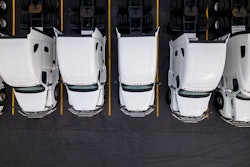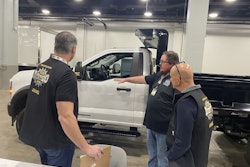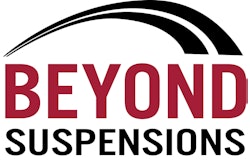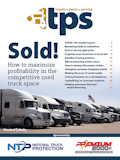Production rightsizing, discussions on budgetary limitations and sustaining customer communication are dominating daily operations for commercial vehicle suppliers in 2025 while the industry ebbs and flows in an uncertain business setting.
A full-scale recession hasn’t hit the commercial vehicle marketplace but the year has not progressed the way many suppliers hoped or anticipated.
During the ‘Real-World View,’ a panel discussion of commercial vehicle suppliers Tuesday during MEMA’s Commercial Vehicle Outlook Conference in Pontiac, Mich., representatives from Hendrickson, Bendix CVS and SAF-Holland shared how their operations have navigated 2025 to date, what they’re expecting for 2026 and beyond and what they’ve learned and continue to learn in today’s uniquely tumultuous environment.
What 2025 has been like for Tier 1 suppliers
From the jump, the trio admitted 2025 hasn’t been the most enjoyable year for their operations. Business hasn’t cratered so much as become inert.
Bendix’s Nicole Oreskovic, vice president, Sales & Marketing, compares it to the bottom of a bathtub. A sharp increase in business exists at some point in the future but right now things are slowly drifting downward.
[RELATED: It’s hard to find good news in an economic forecast these days]
“I think four to six weeks ago I was much more optimistic about the early part of 2026, but now with ongoing tariff uncertainty and freight still being down, we’ve revised our forecasts again,” she says, bringing the rest of the year and 2026 to a mostly flat prediction.
SAF-Holland Americas President Matt Wolfe says conversations have been similar in his office. The company remains healthy and profitable but “well below where we wanted to be when we set budgets” for 2025 last year. He attributes that mostly to the freight market, or lack thereof.
“Kenny [Vieth] hit on a lot of the economic factors,” Wolfe says. “But carriers buy equipment when they are making money and they are not making money.”
That’s visible in metrics across the trucking industry but it’s hit Tier 1 suppliers most evidently in their OEM fulfillment operations. As truck orders have fallen, so have build rates and production capacity. Tuesday’s panelists are feeling that and reacting accordingly. SAF-Holland and Bendix have both reduced workforce at their production and assembly plants to account for weakened demand and, as Oreskovic notes, are reducing their expectations for 2026 accordingly.
How vendors are looking at 2026 operations, and beyond
Hendrickson’s Jeff Zawacki, vice president, Advanced Technology, says his company has been forced to make similar alterations due to market conditions but is attempting to focus most of its strategy beyond short-term market fluctuations. He says this is where customer relationships have become so important. Today’s modern carriers are as tech savvy as ever and are finally beginning to leverage the technology resources suppliers are integrating into their equipment.
Zawacki believes, and Wolfe and Oreskovic agree, that vendors who use their relationships to uncover how fleets are using technology and what they hope to see next are the ones one mostly likely to see their business take off when the freight market eventually recovers.
But Zawacki also acknowledges acting on customer guidance presents its own set of challenges, one of which is just having the engineering and development capabilities to introduces more cutting-edge technologies.
He calls the exit of industry knowledge “one of the greatest threats in our business” and a limiting factor on the entire industry’s growth potential. The other panelists agree, with all three stating recruitment, retention and bolstering operational efficiency have been priorities for their company during this softer sales cycle.
[RELATED: Inflation biggest driver in rising parts sales to date]
“We have to set up our organizations to be more efficient as we come out of this,” Oreskovic says.
What to make of tariffs and global pressures?
The panel didn’t spend much time on tariffs — besides acknowledging the obvious challenges they’ve created — but did touch on possibility of new entrants into the Class 8 space coming from China in the coming years. The panel felt the latter is nearly inevitable and says how domestic manufacturers prepare for Chinese entrants will determine how much market share they can win.
“The impact of tariffs may slow it down, but they are going to come,” says Wolfe. “It’s just a matter of where, when and how soon.”
Adds Zawacki, “There’s a real fact that they will be here. We better be thinking how we’re going to adapt to [them] not thinking they’ll never get in.”











